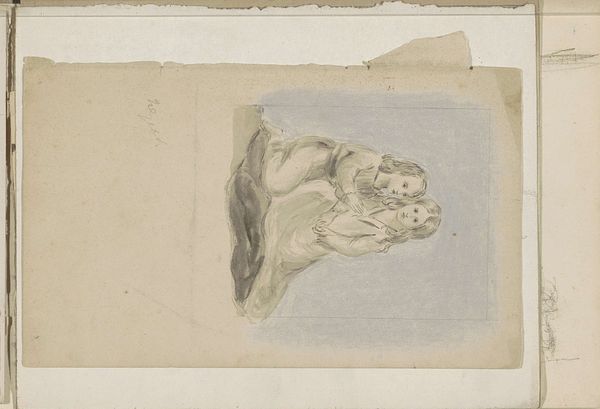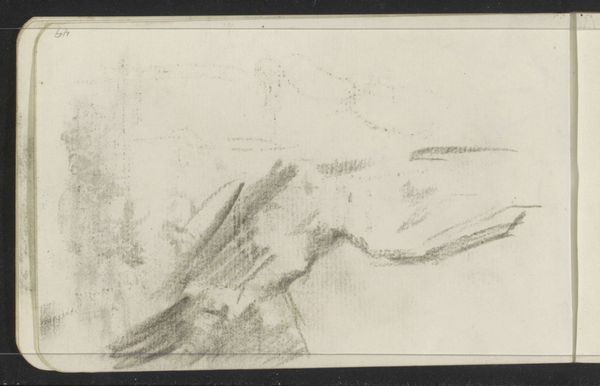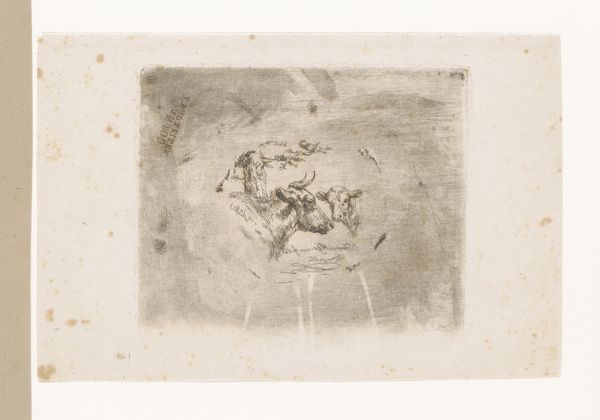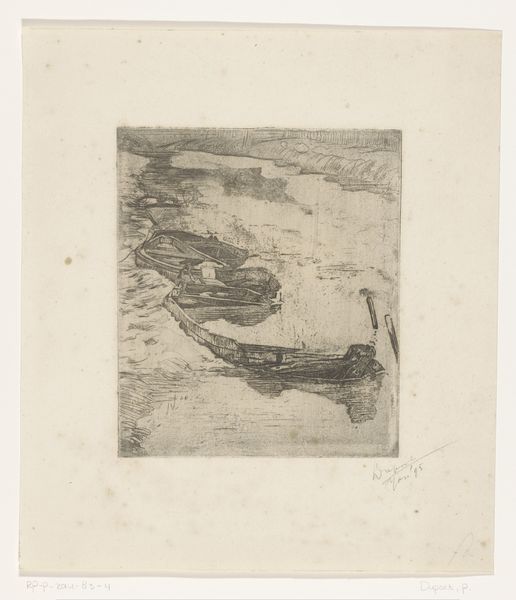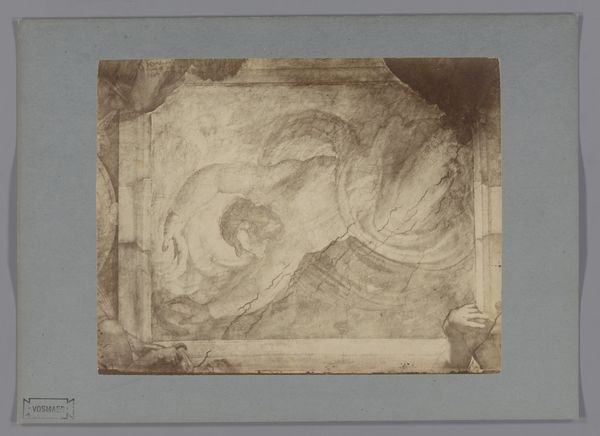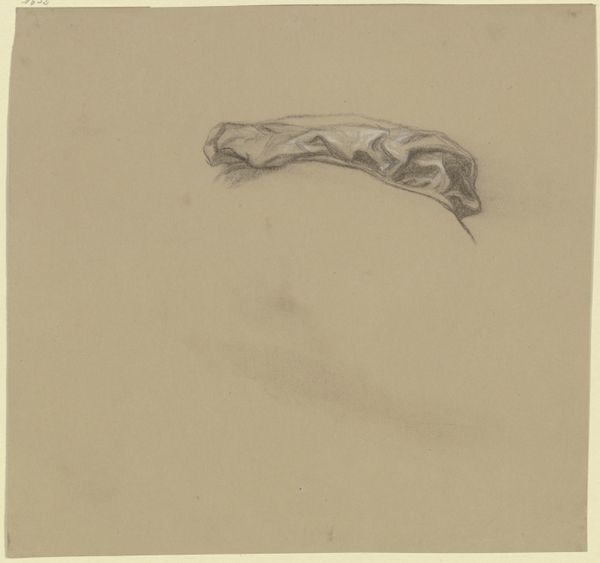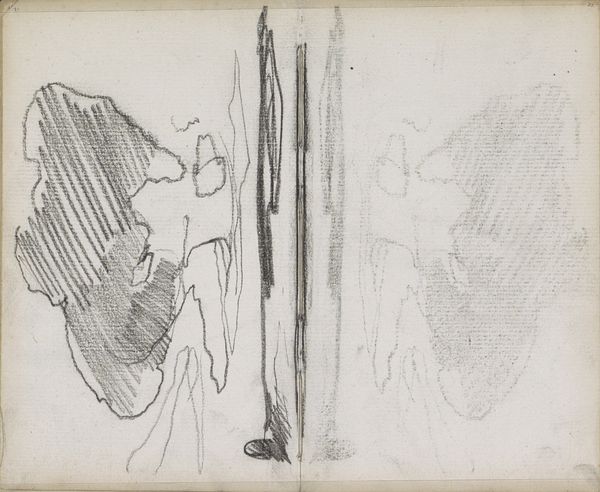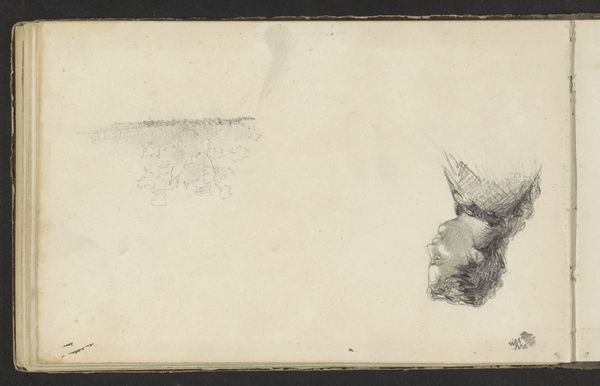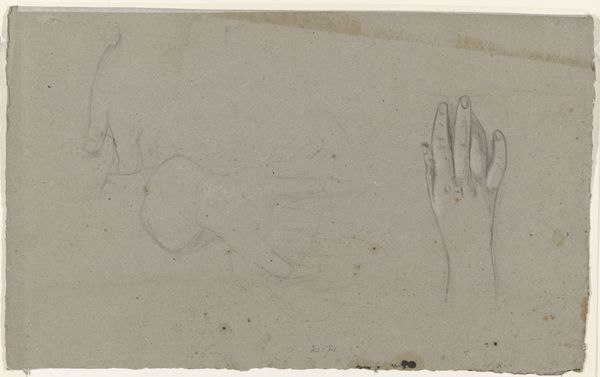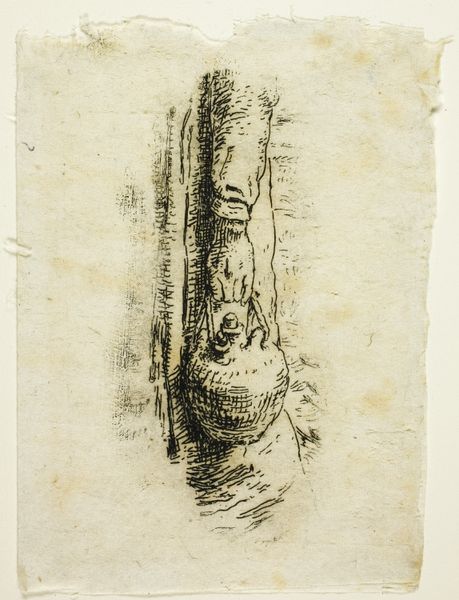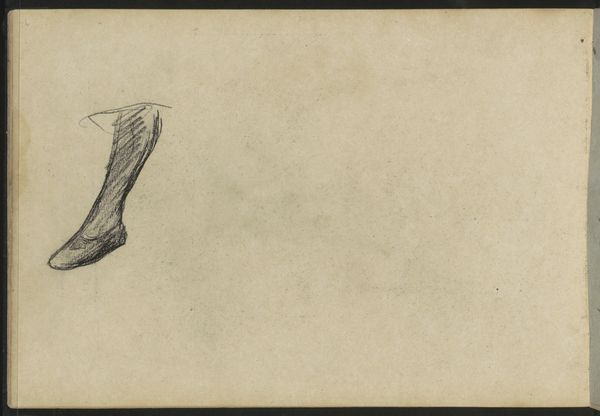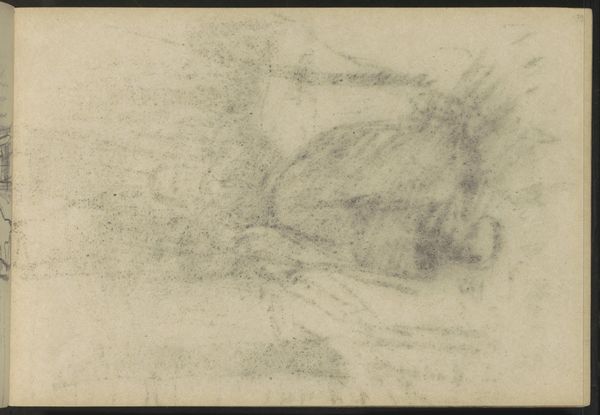
Dimensions: 1 11/16 × 2 3/4 in. (4.29 × 6.99 cm) (image)2 7/16 × 3 1/8 in. (6.19 × 7.94 cm) (sheet)
Copyright: Public Domain
Curator: We're looking at John Clerk of Eldin's "A Mountain Torrent," an etching dating from around 1770 to 1782, currently held in the Minneapolis Institute of Art. What’s your initial read of the piece? Editor: A Romantic surge of energy seems to characterize the scene, all churning water and dramatic shadow. It’s a study in contrasts, but rendered on a tiny scale. There's a palpable sense of the sublime reduced. Curator: Precisely. Clerk's handling of light and dark is masterful. Observe how the diagonal lines create dynamism, forcing the viewer’s eye from the lower foreground up towards the castle. It’s all carefully constructed. The castle might be a visual cue or symbol too, but more than that I feel that it punctuates a movement along a deliberate optical channel. Editor: I wonder if Clerk might have intended a critique, however subtle, of land enclosure and the disruption of rural life. The gentry and aristocracy began disrupting the environment, which resulted in great wealth disparity that hurt the majority of people in the British isles. Did people like him believe this social structure was becoming eroded, much like his rendering of the castle atop that hill is in its ruin? Curator: I concede the era was ripe for commentary. But I tend to interpret his choices formally; there's a delicate tension between the graphic power of the etching and the fragility of the paper. The contrast embodies, even transcends, that tumultuous period you describe. Look, it is contained; not chaotic. The mark-making feels deliberate. Editor: Maybe. I still find it difficult to divorce the aesthetics of landscape art from the politics of land ownership at that moment in history, the birth of modernity. It would be lovely to know the conversations at court when people first came across his works. I want to consider how the audience might have interpreted its message, the ways these sorts of depictions might influence views in real life and not simply operate in some pure realm. Curator: Perhaps we both touch on a truth in this depiction. The turbulent currents and castle set against the backdrop do lend itself to sociopolitical readings and close aesthetic study, even to this day. Editor: Ultimately, it is difficult to remove any historical reading from any artwork! But your observation provides excellent access to this artwork for other viewpoints, too.
Comments
No comments
Be the first to comment and join the conversation on the ultimate creative platform.
